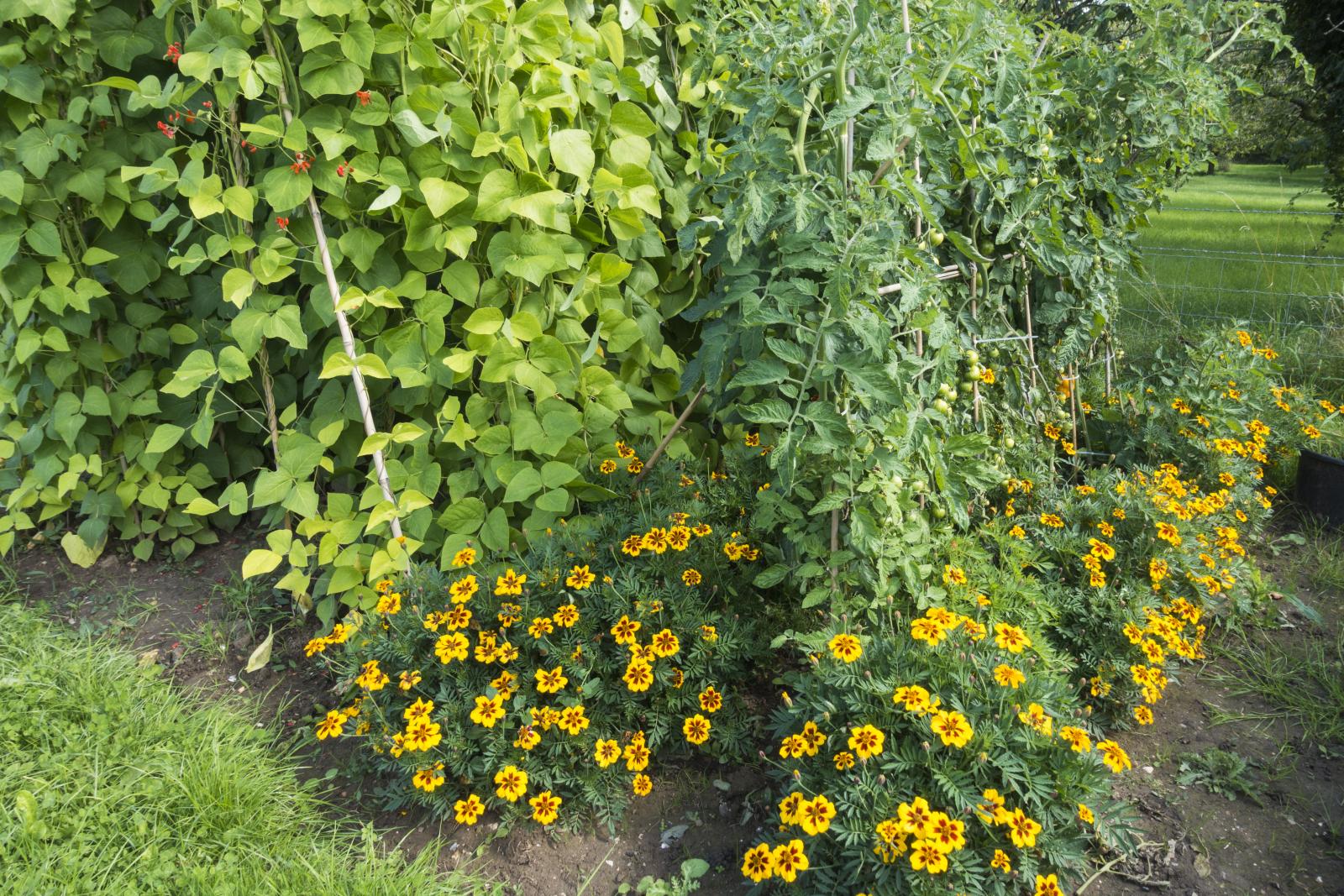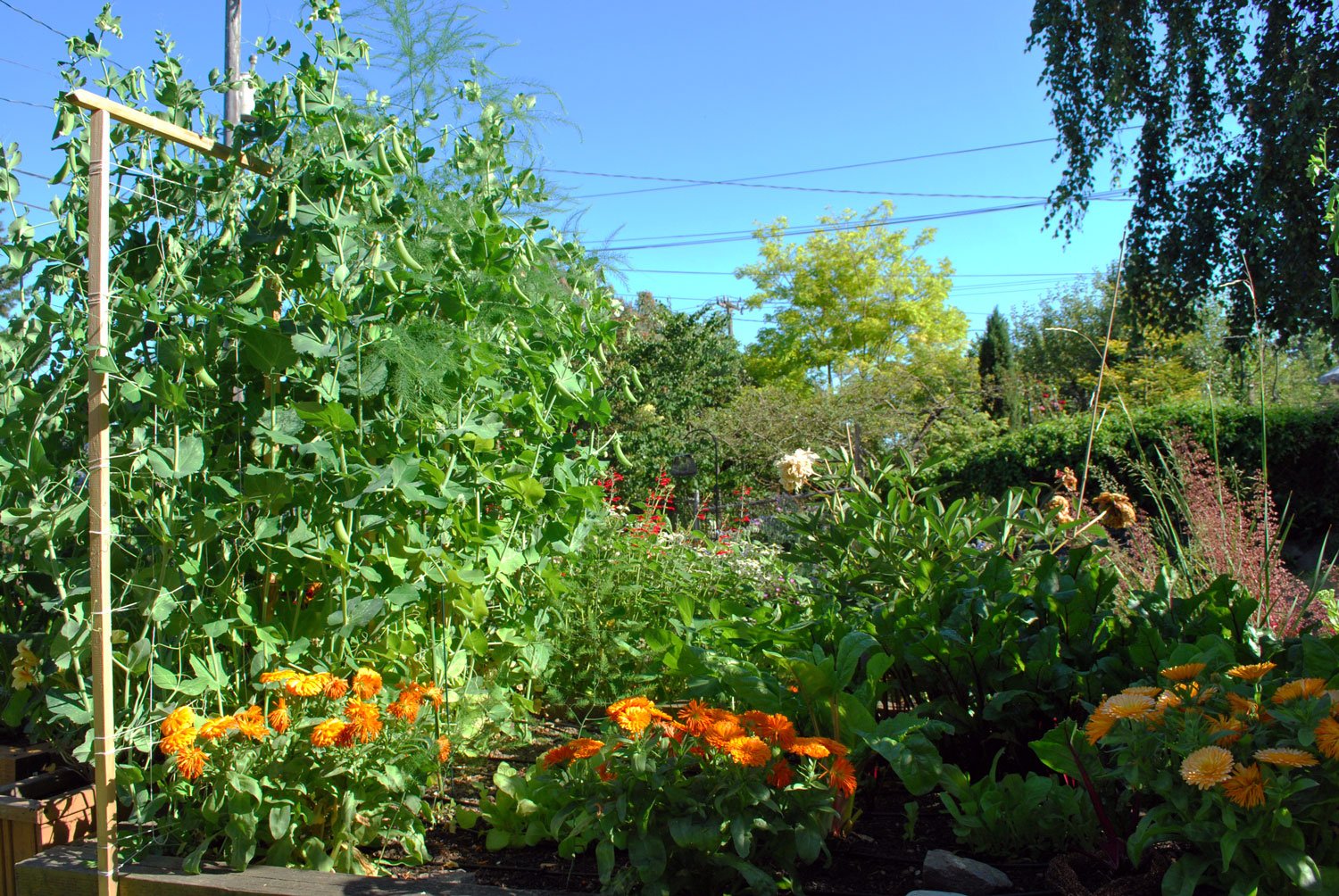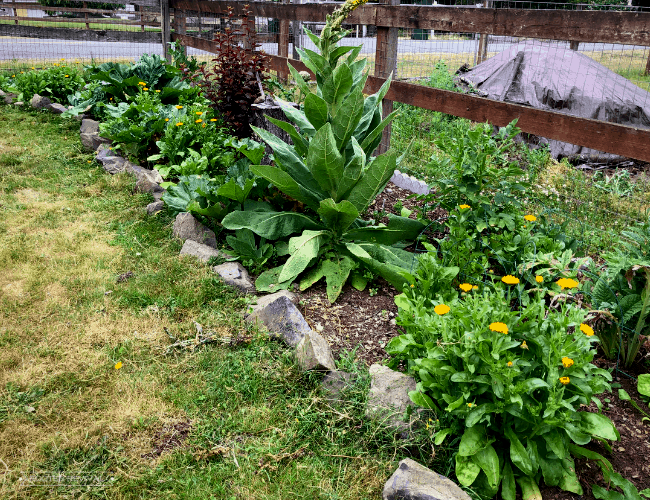Calendula: The Companion Plant That Does It All
Calendula: The Companion Plant That Does It All
Calendula is a versatile and easy-to-grow plant that has many benefits for the garden. It is a member of the daisy family and is native to Europe, Asia, and North Africa. Calendula is known for its bright orange and yellow flowers, which bloom from early summer to late fall.
In addition to its beauty, calendula has a number of practical uses. It is a great companion plant for many vegetables, as it helps to repel pests and attract pollinators. Calendula can also be used as a medicinal herb, and its flowers and petals can be made into teas, salves, and ointments.
Benefits of Calendula
- Attracts pollinators. Calendula is a magnet for bees, butterflies, and other pollinators. This is beneficial for the garden, as pollinators help to pollinate flowers and fruits.
- Repels pests. Calendula's strong scent helps to repel pests such as aphids, beetles, and nematodes. This can help to protect your vegetables and other plants from damage.
- Improves soil health. Calendula is a nitrogen-fixing plant, which means that it helps to improve the nitrogen content of the soil. This can benefit other plants in the garden.
- Has medicinal properties. Calendula has been used for centuries as a medicinal herb. Its flowers and petals can be made into teas, salves, and ointments that can help to treat a variety of ailments, including cuts, scrapes, burns, and eczema.
How to Grow Calendula
Calendula is a relatively easy plant to grow. It prefers full sun and well-drained soil. Calendula can be started from seed or purchased as seedlings. If starting from seed, sow the seeds directly in the garden about 2 weeks before the last frost. If purchasing seedlings, plant them in the garden about 1 foot apart.
Calendula is a low-maintenance plant and does not require much water. Water it regularly during dry periods, but do not overwater. Calendula will flower throughout the summer and fall. To encourage continued flowering, deadhead the spent flowers.
Companion Planting with Calendula
Calendula is a great companion plant for many vegetables. It is particularly beneficial for tomatoes, cucumbers, and carrots. Calendula helps to repel pests that can damage these vegetables, and it also attracts pollinators that help to pollinate the flowers and fruits.
Other good companion plants for calendula include asparagus, beans, broccoli, Brussels sprouts, and potatoes. Calendula can also be planted near herbs such as basil, dill, and mint.
Harvesting Calendula
Calendula flowers can be harvested throughout the summer and fall. To harvest, simply snip off the flowers with a pair of scissors. The flowers can be used fresh or dried.
Fresh calendula flowers can be added to salads, soups, and stews. They can also be used to make teas, salves, and ointments. Dried calendula flowers can be stored in an airtight container for up to a year.
Conclusion
Calendula is a versatile and easy-to-grow plant that has many benefits for the garden. It is a great companion plant for many vegetables, and it also has a number of practical and medicinal uses. If you are looking for a plant that is both beautiful and beneficial, calendula is a great choice.
Calendula is a beautiful and versatile flower that has many benefits for both the garden and the gardener. It is a natural insect repellent, attracts pollinators, and can be used to make medicinal remedies. But did you know that calendula can also be a great companion plant?
When companion planted, calendula can help to improve the health and productivity of other plants in the garden. For example, calendula can help to deter pests, such as aphids and whiteflies, from attacking tomatoes, cucumbers, and other vegetables. It can also help to improve the flavor of carrots and asparagus.
If you are interested in learning more about calendula companion planting, I recommend visiting Gardenia Inspiration. This website provides a comprehensive guide to companion planting, including information on the best plants to pair with calendula.
FAQ of calendula companion planting
Q1: What are the benefits of companion planting with calendula?
A: Calendula is a great companion plant for many vegetables and herbs. It can help to attract beneficial insects, repel pests, and improve soil health.
- Attracts beneficial insects: Calendula flowers attract pollinators such as bees, butterflies, and ladybugs. These insects help to pollinate plants and control pests.
- Repels pests: Calendula's strong scent can repel pests such as aphids, spider mites, and whiteflies.
- Improves soil health: Calendula's roots release nutrients into the soil, which can help to improve soil fertility.
Q2: What plants are good companions for calendula?
A: Some of the best companion plants for calendula include:
- Asparagus: Calendula can help to repel asparagus beetles.
- Beans: Calendula can help to attract pollinators and repel aphids.
- Broccoli: Calendula can help to repel cabbage moths and other pests.
- Carrots: Calendula can help to repel carrot flies.
- Cucumbers: Calendula can help to attract pollinators and repel cucumber beetles.
- Potatoes: Calendula can help to repel potato beetles.
- Pumpkins: Calendula can help to attract pollinators and repel squash bugs.
- Tomatoes: Calendula can help to attract pollinators and repel tomato hornworms.
Q3: What plants should not be planted near calendula?
A: There are a few plants that should not be planted near calendula, including:
- Cabbage: Calendula can attract cabbage moths, which can also damage cabbage plants.
- Peas: Calendula can suppress the growth of peas.
- Spinach: Calendula can attract pests that also damage spinach plants.
Q4: How far apart should calendula plants be planted?
A: Calendula plants should be planted about 12 inches apart. This will give them enough room to grow and spread.
Q5: How do I care for calendula companion plants?
A: Calendula companion plants should be watered regularly, especially during hot, dry weather. They should also be fertilized monthly with a balanced fertilizer.
Image of calendula companion planting
5 different images of "calendula companion planting" from Pinterest:
- Calendula and tomatoes. Calendula is a good companion plant for tomatoes because it helps to deter pests such as aphids, whiteflies, and nematodes. It also attracts pollinators, which help to improve tomato pollination and fruit set.

- Calendula and carrots. Calendula helps to repel carrot root fly, a common pest of carrots. It also helps to improve the flavor of carrots.

- Calendula and asparagus. Calendula helps to deter asparagus beetles, a common pest of asparagus. It also helps to improve the flavor of asparagus.

- Calendula and roses. Calendula helps to deter aphids, spider mites, and other pests that can damage roses. It also helps to attract pollinators, which help to improve rose pollination and flower production.

- Calendula and herbs. Calendula can be planted with a variety of herbs, including basil, mint, and rosemary. It helps to deter pests and attract pollinators, which can benefit all of the plants in the garden.

Post a Comment for "Calendula: The Companion Plant That Does It All"